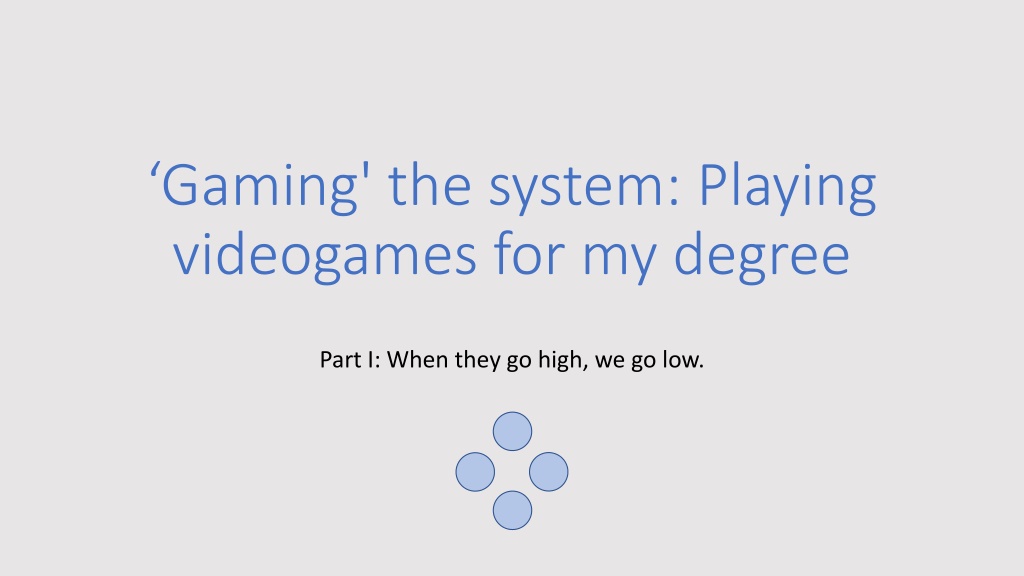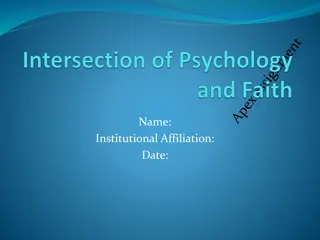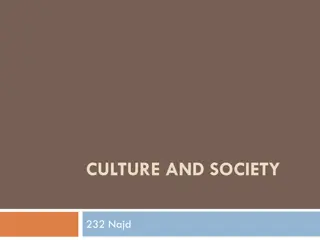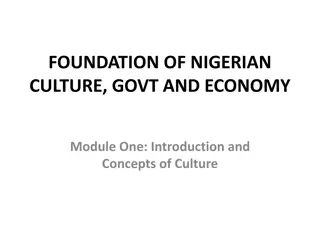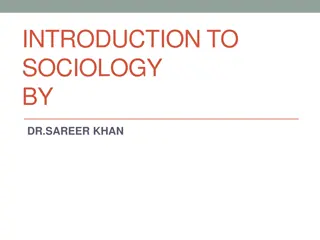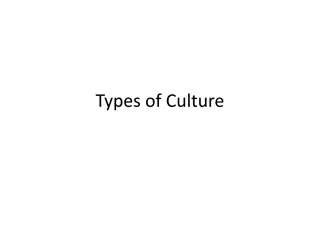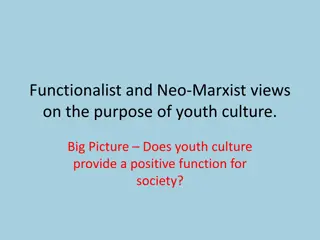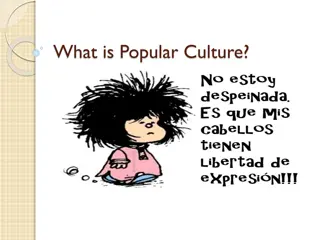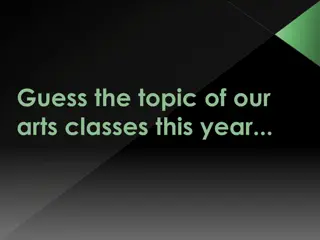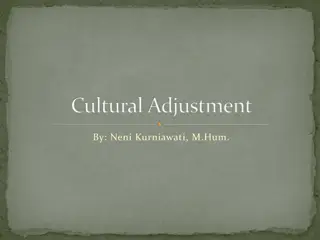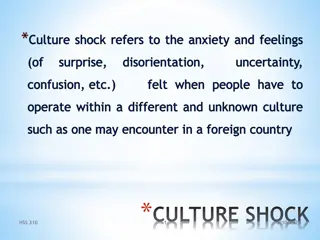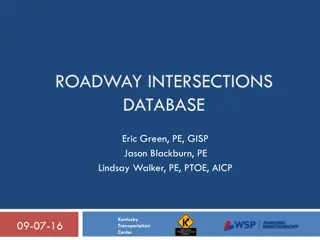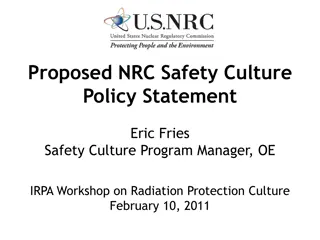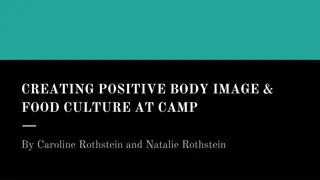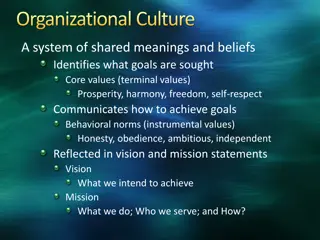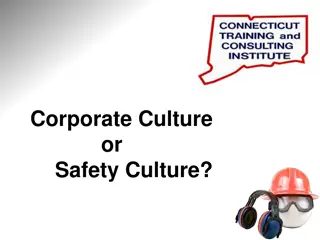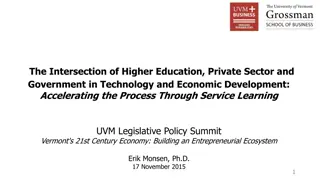Exploring the Intersection of Culture and Education Through Videogames
Delve into the relationship between academia, literature, high culture versus popular culture, and writing for young readers. Reflect on hierarchies surrounding these concepts and the significance of videogames in academic pursuits. Discover how different cultural values are transmitted through literature and children's fiction, shaping attitudes and perceptions. Explore the potential of videogames as educational tools in a contemporary cultural context.
Uploaded on Oct 04, 2024 | 0 Views
Download Presentation

Please find below an Image/Link to download the presentation.
The content on the website is provided AS IS for your information and personal use only. It may not be sold, licensed, or shared on other websites without obtaining consent from the author. Download presentation by click this link. If you encounter any issues during the download, it is possible that the publisher has removed the file from their server.
E N D
Presentation Transcript
Gaming' the system: Playing videogames for my degree Part I: When they go high, we go low.
WHAT DO THESE WHAT DO THESE WORDS MEAN TO YOU? WORDS MEAN TO YOU? 1- ACADEMIA 2-LITERATURE
Ferlic, J. (2018). Light Inside Library Free Stock Photo. https://www.pexels.com/pho to/blur-book-stack-books- bookshelves-590493/
What hierarchies What hierarchies surround these surround these concepts? concepts?
HIGH CULTURE vs. POPULAR CULTURE Culture being a pursuit of our total perfection by means of getting to know, on all the matters which most concern us, the best which has been thought and said in the world, and, through this knowledge, turning a stream of fresh and free thought upon our stock notions and habits, which we now follow staunchly but mechanically, vainly imagining that there is a virtue in following them staunchly which makes up for the mischief of following them mechanically. Arnold, M., Lipman, S., & Cowling, M. (1994). Culture and Anarchy. Yale University Press. p.viii
And for Young Readers? "Writing for children is usually purposeful, its intention being to foster in the child reader a positive apperception of some sociocultural values which, it is assumed, are shared by author and audience. These values include contemporary morality and ethics, a sense of what is valuable in the culture's past (what a particular contemporary social formation regards as the culture's centrally important traditions), and aspirations about the present and future. Since a culture's future is, to put it crudely, invested in its children, children's writers often take upon themselves the task of trying to mould audience attitudes into 'desirable' forms, which can mean either an attempt to perpetuate certain values or to resist socially dominant values which particular writers oppose." Stephens, J. (1992). Language and Ideology in Children's Fiction. Harlow: Pearson Education Ltd. p.3
So, why videogames? Fring, G. (2020). Crop smiling friends in casual clothes with gamepads Free Stock Photo. https://www.pexels.com/photo/crop-asian-girlfriends-playing-video-games-at-home-4132411/
We should accept that videogames can be just for pleasure, because we know that any text that prompts excitement, joy, and voluntary engagement is already teaching something that exceeds measurement. I once read The Secret Garden to a seven-year-old boy and we cried about loneliness and laughed at my shocking Yorkshire accent. Did he learn something? Absolutely. But it was a type of collateral learning: I could see how The Secret Garden had furnished his imagination when we played outdoors: he would translate bird chirps for me and insist on planting all of my apple pips, when he wasn t protecting me from Creepers, that is. Because Minecraft was an equally important part of his perceptual matrix, expressed through his desire to wield a branch as a pickaxe and to build forts to keep us safe. Books and videogames already occupied the same spaces in his mind, so why shouldn t they occupy the same spaces in his classroom? Reay, E. (2019). Creepers in the Classroom : Emphasising the Poetic Power of Videogames. FERSA University of Cambridge Blog. https://fersacambridge.com/2019/05/13/creepers-in-the-classroom-emphasising-the-poetic-power-of-videogames/
Haggis et als (2018) 5 Foundational Statements 1) Playfulness is a primary, unintentional, and atavistic route to learning (p.3) 2) All video games can improve or harm the lives of their players, regardless of type or authorial intentionality (p.7) 3) Playing for its own sake is a worthwhile activity (p.9) 4) All types of video games are already part of the wider discourse of our self- reflexive society (p.10) 5) All video games combine the Social Sciences and Humanities (SSH) with technology and innovation (p.12) Haggis-Burridge, M., Passarelli, M., Dagnino, F., Earp, J., Manganello, F., Persico, D., Pozzi, F., Bailey, C., Perrotta, C., & Buijtenweg, T. (2018). A Manifesto for European Video Games. CNR Edizioni.
And now for a And now for a case study! case study! To Be Continued To Be Continued
References A Arnold, M., Lipman, S., & Cowling, M. (1994). Culture and Anarchy. Yale University Press. Haggis-Burridge, M., Passarelli, M., Dagnino, F., Earp, J., Manganello, F., Persico, D., Pozzi, F., Bailey, C., Perrotta, C., & Buijtenweg, T. (2018). A Manifesto for European Video Games. CNR Edizioni. OFCOM. (2017). Children and Parents: Media Use and Attitudes Report. London: OFCOM. Reay, E. (2019, May 13). Creepers in the Classroom : Emphasising the Poetic Power of Videogames. FERSA University of Cambridge Blog. https://fersacambridge.com/2019/05/13/creepers-in-the-classroom-emphasising-the-poetic-power-of- videogames/ Stephens, J. (1992). Language and Ideology in Children's Fiction. Harlow: Pearson Education Ltd.
